Build Ceph cluster
This article takes Ceph octopus version as an example!
If not specified, the following commands are executed on all nodes!
1, System resource planning
| Node name | System name | CPU / memory | disk | network card | IP address | OS |
|---|---|---|---|---|---|---|
| Deploy | deploy.ceph.local | 2C/4G | 128G+3*20G | ens33 | 192.168.0.10 | CentOS7 |
| Node1 | node1.ceph.local | 2C/4G | 128G+3*20G | ens33 | 192.168.0.11 | CentOS7 |
| ens37 | 10.0.0.11 | |||||
| Node2 | node2.ceph.local | 2C/4G | 128G+3*20G | ens33 | 192.168.0.12 | CentOS7 |
| ens37 | 10.0.0.12 | |||||
| Node3 | node3.ceph.local | 2C/4G | 128G+3*20G | ens33 | 192.168.0.13 | CentOS7 |
| ens37 | 10.0.0.13 | |||||
| Client | client.ceph.local | 2C/4G | 128G+3*20G | ens33 | 192.168.0.100 | CentOS7 |
2, Build Ceph storage cluster
1. Basic system configuration
1. Install basic software
yum -y install vim wget net-tools python3-pip epel-release bash-completion

2. Set up mirror warehouse
cat > /etc/yum.repos.d/ceph.repo << EOF [ceph] name=ceph baseurl=https://mirrors.aliyun.com/ceph/rpm-octopus/el7/x86_64/ gpgcheck=0 priority =1 [ceph-noarch] name=cephnoarch baseurl=https://mirrors.aliyun.com/ceph/rpm-octopus/el7/noarch/ gpgcheck=0 priority =1 [ceph-source] name=Ceph source packages baseurl=https://mirrors.aliyun.com/ceph/rpm-octopus/el7/SRPMS gpgcheck=0 priority=1 EOF

3. Set name resolution
echo 192.168.0.10 deploy.ceph.local >> /etc/hosts echo 192.168.0.11 node1.ceph.local >> /etc/hosts echo 192.168.0.12 node2.ceph.local >> /etc/hosts echo 192.168.0.13 node3.ceph.local >> /etc/hosts

4. Set NTP
yum -y install chrony

systemctl start chronyd systemctl enable chronyd systemctl status chronyd

chronyc sources

5. Set firewall, SELinux
systemctl stop firewalld systemctl disable firewalld setenforce 0 sed -i 's/SELINUX=enforcing/SELINUX=disabled/g' /etc/selinux/config

6. Set SSH password free login
Configure secret free ssh on the Delpoy node:
ssh-keygen

for host in deploy.ceph.local node1.ceph.local node2.ceph.local node3.ceph.local; do ssh-copy-id -i ~/.ssh/id_rsa.pub $host; done
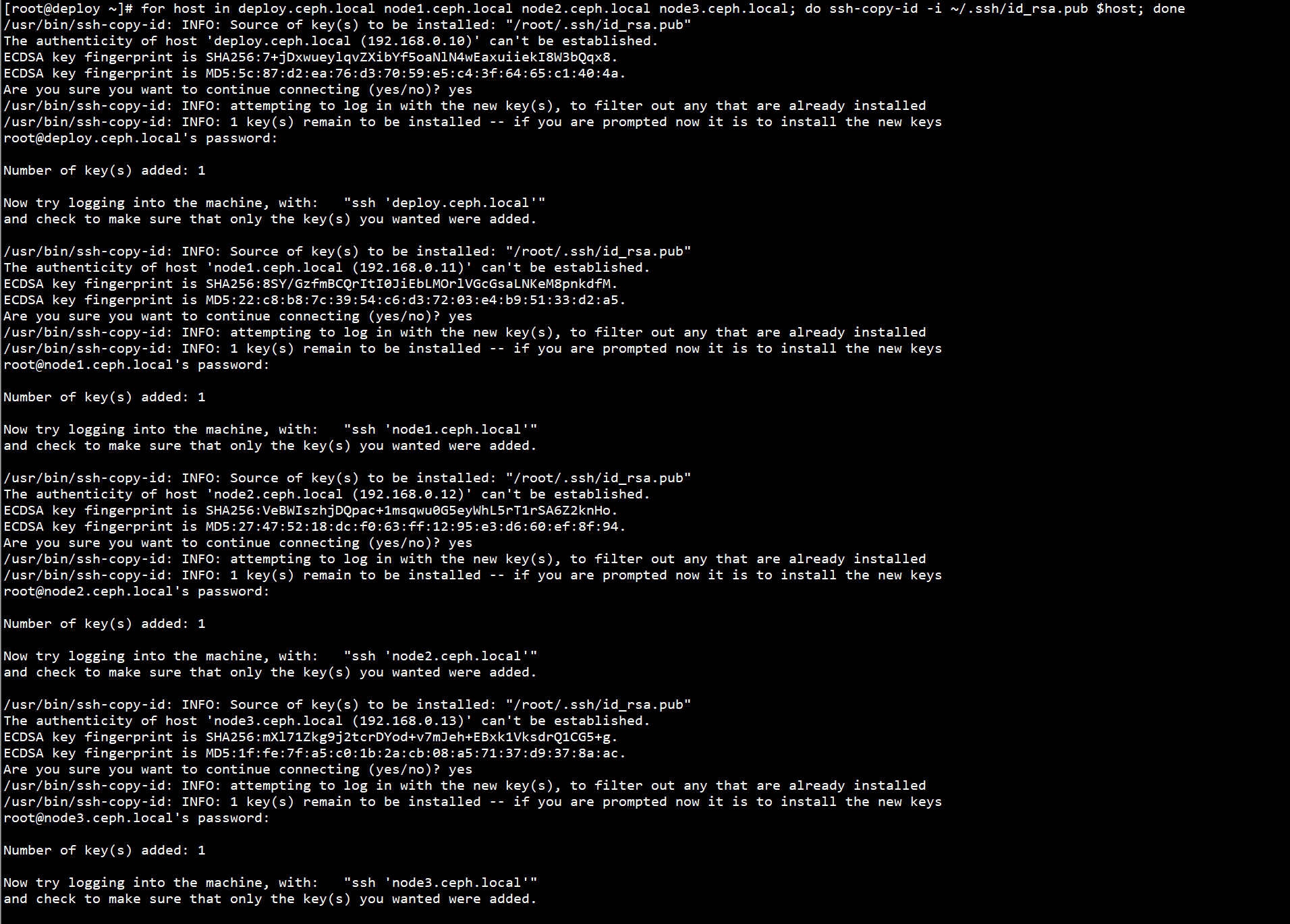
2. Create Ceph storage cluster
1. Installing Python modules
To install Python modules on the Deploy and Node nodes:
pip3 install pecan werkzeug -i https://pypi.doubanio.com/simple
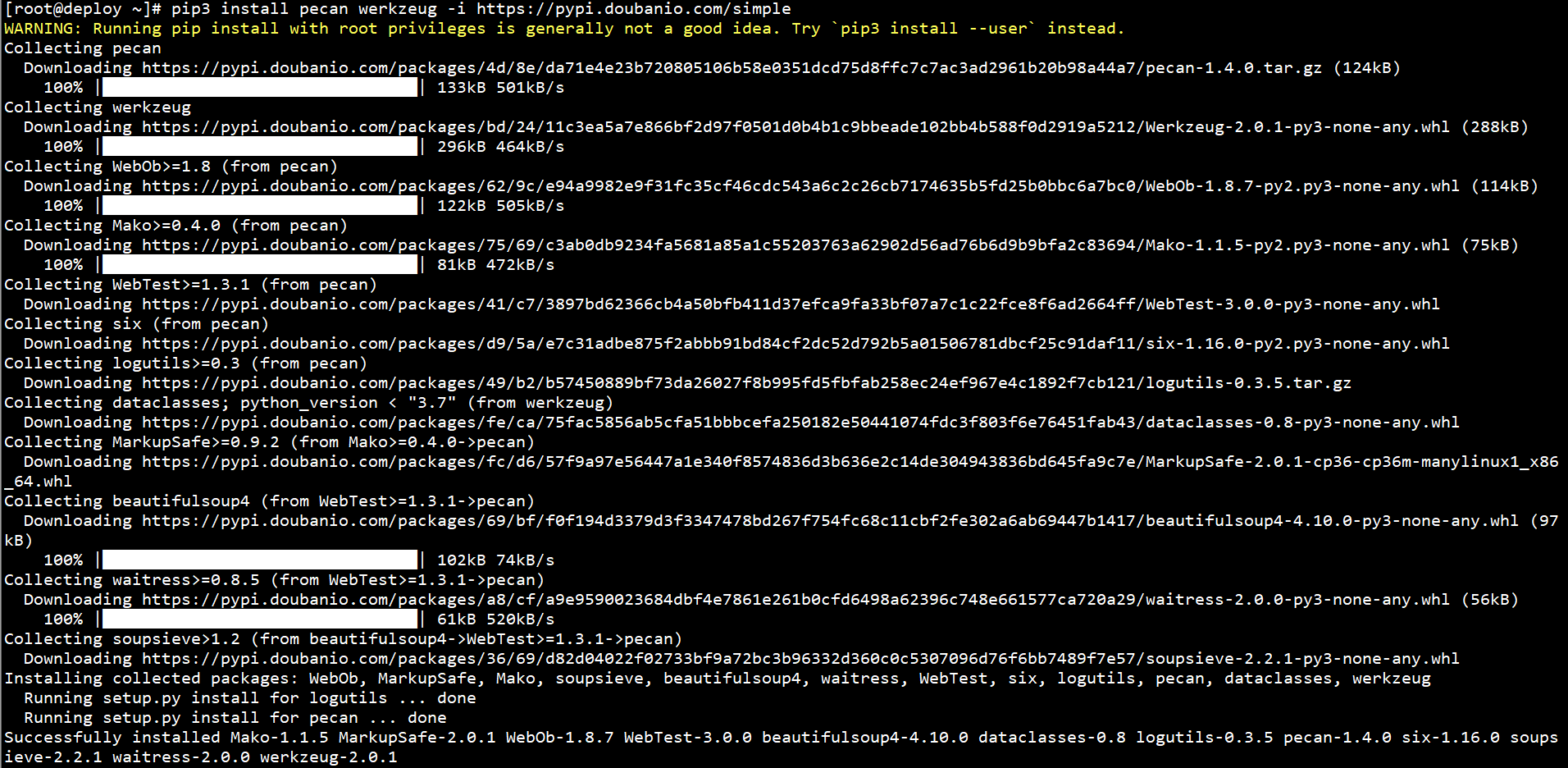
2. Install CEPH deploy
Install CEPH Deploy on the Deploy node:
yum -y install ceph-deploy python-setuptools

3. Create directory
Create a directory on the Deploy node and save the configuration file and key pair generated by CEPH Deploy:
mkdir /root/cluster/

4. Create cluster
Create a cluster on the Deploy node:
cd /root/cluster/ ceph-deploy new deploy.ceph.local
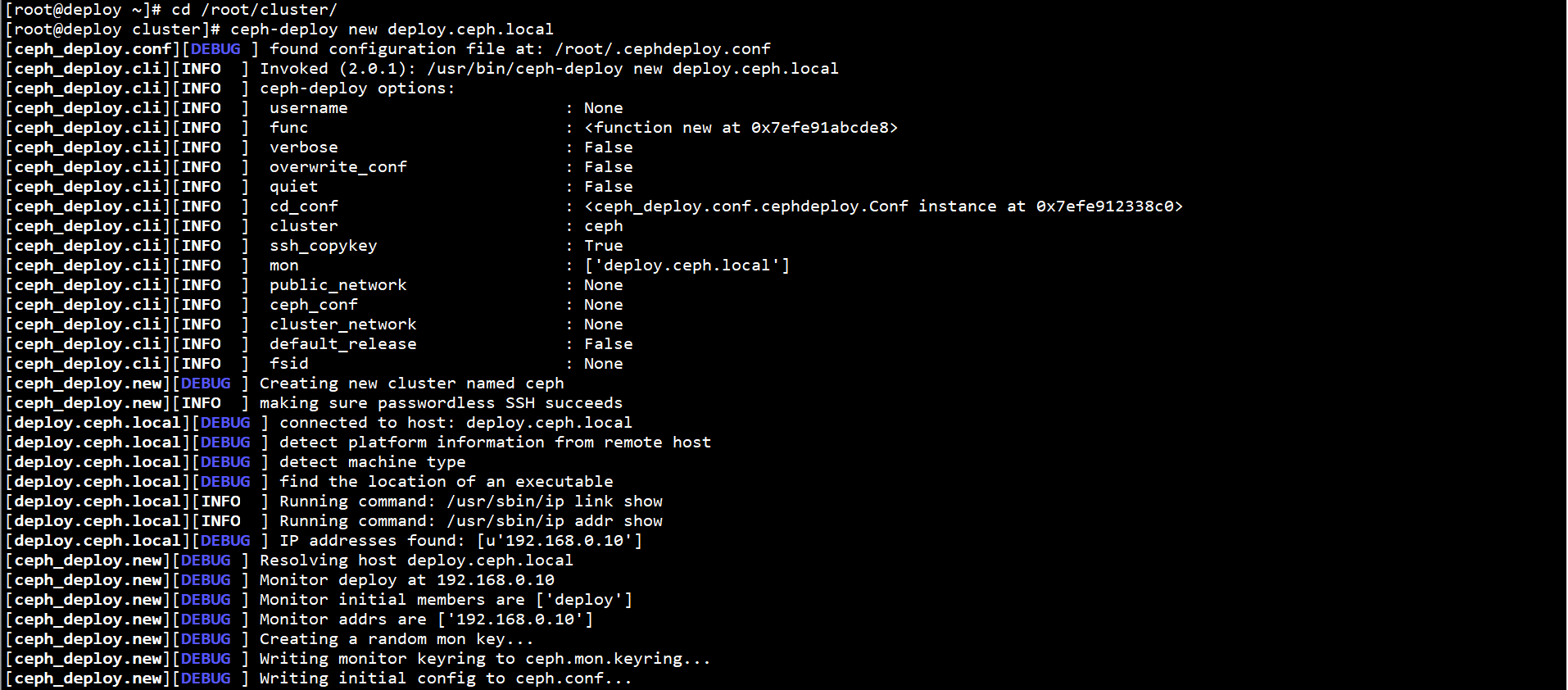
5. Modify profile
On the Deploy node, modify / root/cluster/ceph.conf to specify the front-end and back-end networks:
public network = 192.168.0.0/24 cluster network = 10.0.0.0/24 [mon] mon allow pool delete = true

If the configuration file is changed, synchronize the configuration file to each node and restart the relevant processes
ceph-deploy --overwrite-conf config push deploy.ceph.local ceph-deploy --overwrite-conf config push node1.ceph.local ceph-deploy --overwrite-conf config push node2.ceph.local ceph-deploy --overwrite-conf config push node3.ceph.local
6. Install Ceph
Install Ceph on the Deploy node:
ceph-deploy install deploy.ceph.local ceph-deploy install node1.ceph.local ceph-deploy install node2.ceph.local ceph-deploy install node3.ceph.local

7. Initialize MON node
Initialize MON node on Deploy node:
cd /root/cluster/ ceph-deploy mon create-initial
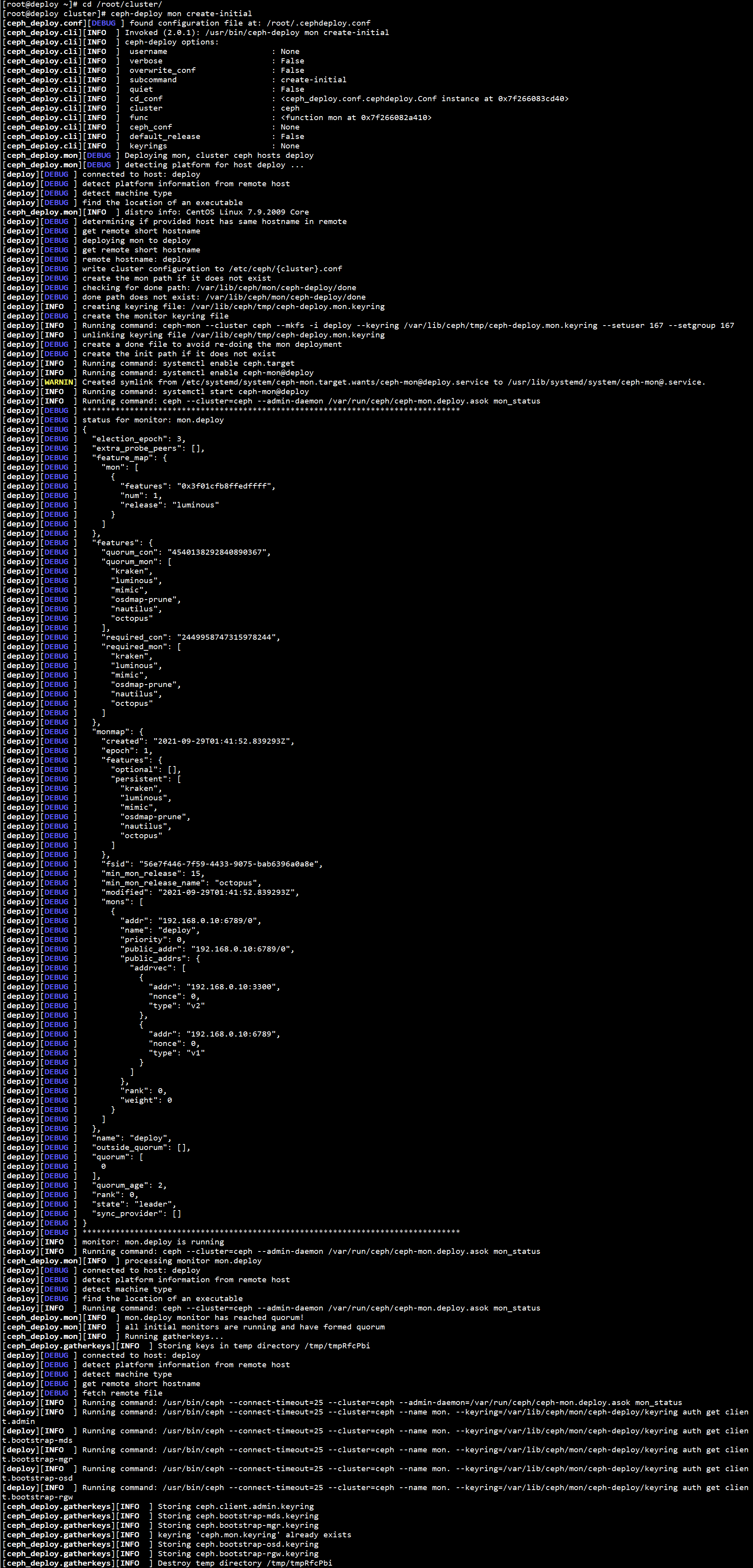
8. View node disks
To view node disks on the Deploy node:
cd /root/cluster/ ceph-deploy disk list node1.ceph.local ceph-deploy disk list node2.ceph.local ceph-deploy disk list node3.ceph.local

9. Erase node disk
To erase a node disk on a Deploy node:
cd /root/cluster/ ceph-deploy disk zap node1.ceph.local /dev/sdb ceph-deploy disk zap node1.ceph.local /dev/sdc ceph-deploy disk zap node1.ceph.local /dev/sdd ceph-deploy disk zap node2.ceph.local /dev/sdb ceph-deploy disk zap node2.ceph.local /dev/sdc ceph-deploy disk zap node2.ceph.local /dev/sdd ceph-deploy disk zap node3.ceph.local /dev/sdb ceph-deploy disk zap node3.ceph.local /dev/sdc ceph-deploy disk zap node3.ceph.local /dev/sdd
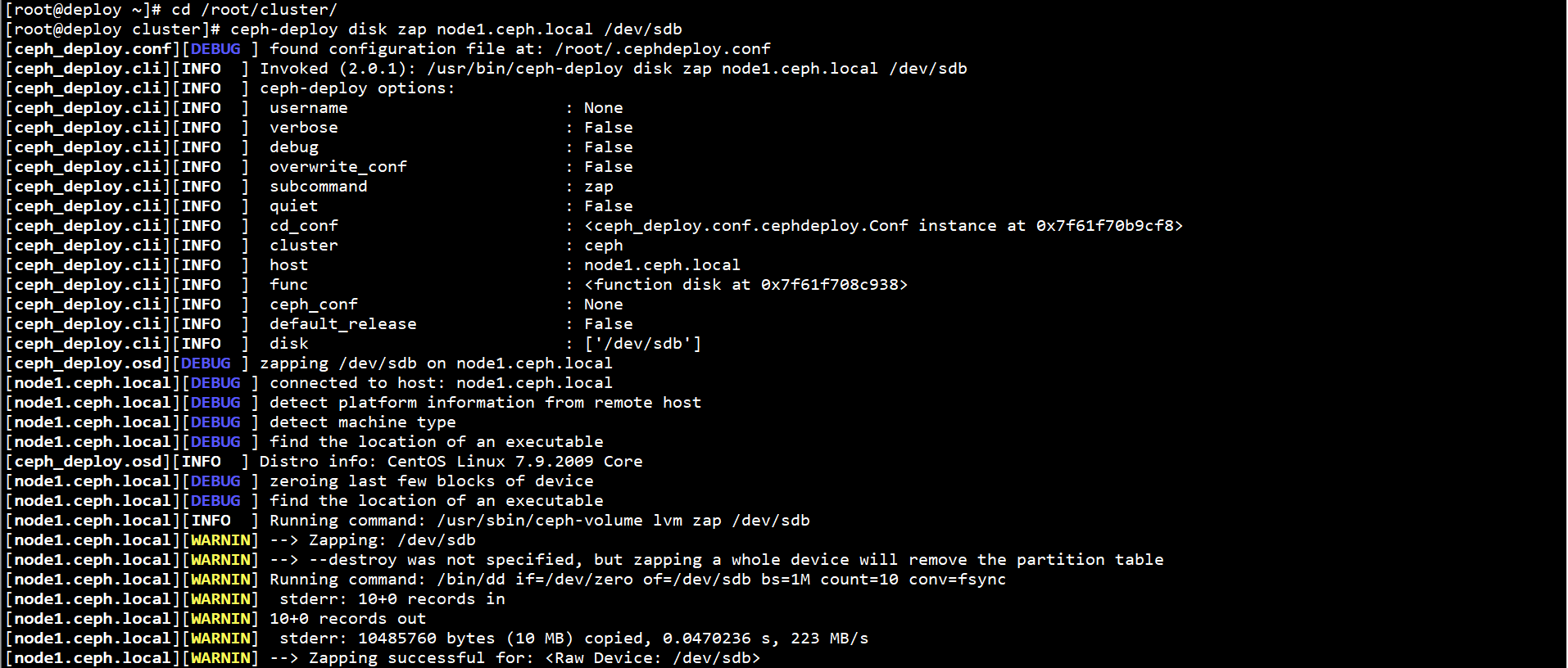
10. Create OSD
Create an OSD on the Deploy node:
cd /root/cluster/ ceph-deploy osd create node1.ceph.local --data /dev/sdb ceph-deploy osd create node1.ceph.local --data /dev/sdc ceph-deploy osd create node1.ceph.local --data /dev/sdd ceph-deploy osd create node2.ceph.local --data /dev/sdb ceph-deploy osd create node2.ceph.local --data /dev/sdc ceph-deploy osd create node2.ceph.local --data /dev/sdd ceph-deploy osd create node3.ceph.local --data /dev/sdb ceph-deploy osd create node3.ceph.local --data /dev/sdc ceph-deploy osd create node3.ceph.local --data /dev/sdd
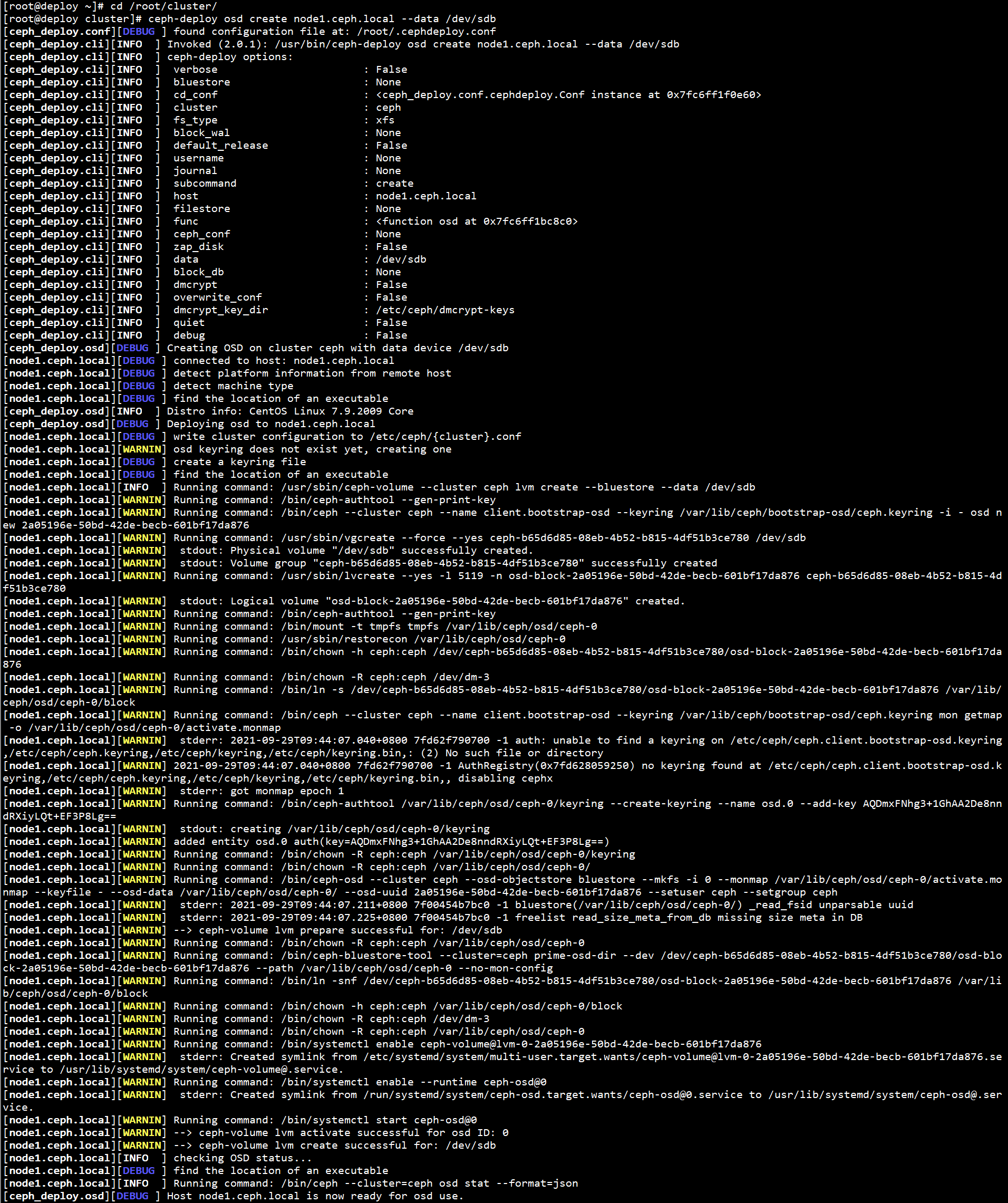
11. View disk and partition information
View disk and partition information on the Deploy node:
cd /root/cluster/ ceph-deploy disk list node1.ceph.local ceph-deploy disk list node2.ceph.local ceph-deploy disk list node3.ceph.local

View disk and partition information on the Node:
lsblk

12. Copy configuration and key
Copy the configuration file and admin key on the Deploy Node to the Node:
cd /root/cluster/ ceph-deploy admin node1.ceph.local ceph-deploy admin node2.ceph.local ceph-deploy admin node3.ceph.local

13. Initialize MGR node
Initialize the MGR node on the Deploy node:
cd /root/cluster/ ceph-deploy mgr create node1.ceph.local ceph-deploy mgr create node2.ceph.local ceph-deploy mgr create node3.ceph.local
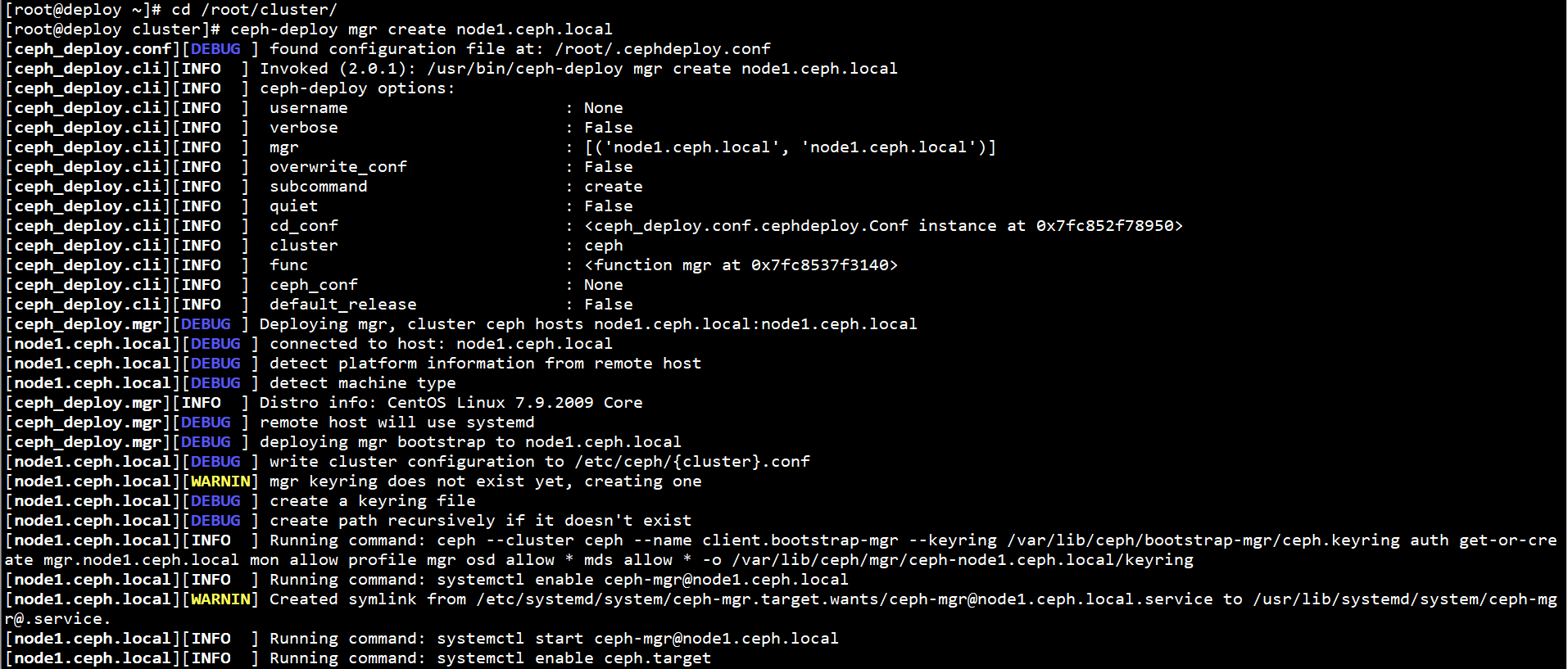
14. Copy keyring file
On the Deploy node, copy the keyring file to the Ceph Directory:
cp /root/cluster/*.keyring /etc/ceph/

15. Disable unsafe mode
Disable unsafe mode on the Deploy node:
ceph config set mon auth_allow_insecure_global_id_reclaim false

15. View cluster status
To view Ceph status on the Deploy node:
ceph -s

ceph health

View OSD status on the Deploy node:
ceph osd stat

View the OSD directory tree on the Deploy node:
ceph osd tree
